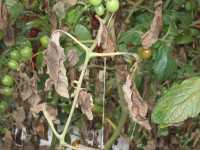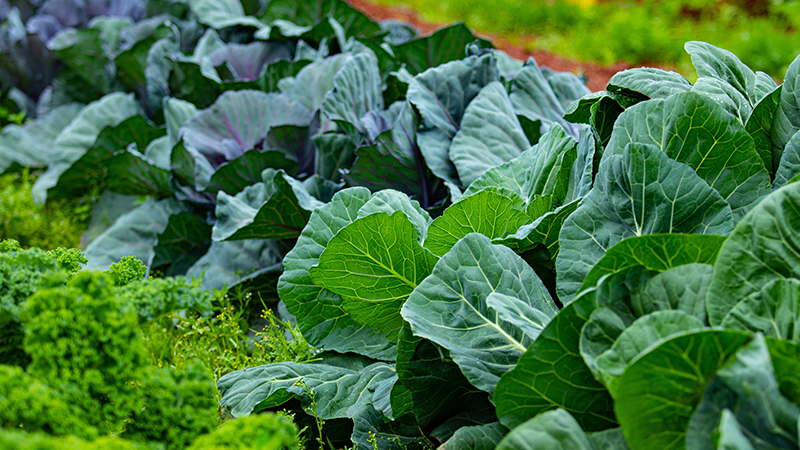Find, Fight Tomato Russet Mites

Identification
In the past, tomato russet mite was rarely damaging in Florida, but recently has increased in incidence. Adults and nymphs have piercing, sucking mouthparts and feed on the undersides of lower leaves, on petioles, and stems producing a greasy appearance, which becomes bronzed. Leaves become yellow, curl upwards, dry out, and drop. Damage starts at the bottom of plants and moves upward and may be confused with nutritional deficiencies, plant disease, or water stress.
Adults are extremely small, requiring a 15x hand lens to be observed. The mite is tapered and wedge-shaped with two pairs of legs at the broader head end and long hairs on the posterior end. They are translucent and yellowish, tan, or pink in color.
Survival And Spread
Russet mite eggs are laid on the lower portion of plants. There are two nymphal instars, which do not move far from where they hatched and tend to congregate on the edges of leaves. When damage to lower plant parts increases, the mites move up to younger foliage. As plants begin to die, mites may aggregate at the highest parts of the plants and are picked up and spread by the wind. The egg-to-adult period is less than a week in warm weather.
Russet mites may be present year round, but are most abundant during hot, dry weather. Weeds such as nightshade and field bindweed may be a source of infestations.
Management Methods
Several cultural considerations will help reduce russet mite problems. Start with clean transplants. Crops should not be planted near infested crops, and infested crops and weeds should be destroyed. Movement of people or equipment from infested to uninfested crops should be avoided. Because of the minute size of the mites, monitoring is done by watching for damage and then confirming mite presence with a hand lens or with a microscope.
Look for bronzing on lower leaves and stems, then check damaged leaves and the green leaves immediately above them for mites. Damage is typically first observed when green fruit reaches marble size.
Determine the extent of each infested area in the field by examining leaves and stems for bronzing, and mark the boundaries of the infested areas. Check these areas again in a few days to see if they are increasing in size. Immediate treatment is necessary when damage symptoms begin to spread.
Predatory mites are the major natural enemies of russet mites. Use of selective miticides and avoidance of broad spectrum insecticides may enhance biological control. Miticides should be applied when damage is observed and the presence of mites is confirmed. Sulfur has long been used to manage russet mites, but abamectin (Agri-Mek, Syngenta Crop Protection) and other new miticides are effective. Mined sulfur is acceptable on organically certified produce.
No resistance has been reported in Florida. Rotation of products of different chemical classes is an important resistance management tactic. Consult UF/IFAS recommendations for currently labeled miticides for russet mite control in Florida tomatoes.










